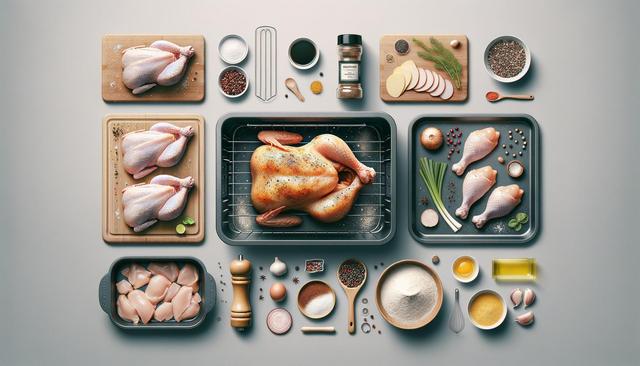Choosing the Right Cut of Chicken
Before you begin baking, selecting the right cut of chicken is an important first step. Whether you prefer chicken breasts, thighs, drumsticks, or wings, the cut you choose will influence cooking time and flavor. Bone-in, skin-on pieces tend to retain more moisture and flavor, while boneless, skinless cuts are leaner and cook faster. For beginners, bone-in thighs are a forgiving option as they stay juicy and flavorful even if slightly overcooked.
When shopping, look for chicken that is fresh, with no discoloration or off smells. If using frozen chicken, ensure it is completely thawed before baking. This helps the meat cook evenly and avoid dryness. Patting the chicken dry with a paper towel will also help achieve a crispier skin if you’re baking skin-on pieces.
Simple Seasoning Ideas
Seasoning is key to making your baked chicken delicious. You don’t need to be a chef to bring out amazing flavor—simple ingredients can go a long way. A basic seasoning mix can include:
- Salt and black pepper
- Garlic powder or minced garlic
- Paprika for color and mild heat
- Dried herbs like thyme, oregano, or rosemary
Mix your chosen spices in a small bowl and rub them evenly onto the chicken. You can also marinate the chicken for a few hours or overnight for deeper flavor. Common marinades include olive oil, lemon juice, soy sauce, and herbs. If time is short, even a quick 30-minute marination can enhance the taste.
Preparing and Preheating the Oven
Preheating your oven is essential for consistent results. Set the oven to 400°F (about 200°C) for a balance between browning the outside and cooking the chicken through. While the oven heats, arrange your chicken pieces on a baking tray lined with parchment paper or lightly greased foil. Make sure the pieces are spaced out to allow hot air to circulate around each one.
Using a wire rack set over a baking sheet helps the chicken cook more evenly and allows fat to drip away. For extra moisture, you can add a splash of chicken broth or water to the bottom of the pan. This is especially helpful when baking lean cuts like chicken breasts, which can dry out easily.
Baking Time and Temperature Tips
The baking time depends on the size and type of chicken pieces. Here’s a general guide:
- Boneless breasts: 20–25 minutes
- Bone-in thighs or legs: 35–45 minutes
- Wings: 25–30 minutes
To ensure your chicken is fully cooked, use a meat thermometer. The internal temperature should reach 165°F (75°C). Insert the thermometer into the thickest part of the meat without touching the bone. If you don’t have a thermometer, cut into the thickest part and check that the juices run clear and the meat is no longer pink.
For crispy skin, consider broiling the chicken for the last 2–3 minutes of baking. Keep a close eye on it to prevent burning.
Serving and Storing Baked Chicken
Once baked, let the chicken rest for 5–10 minutes before serving. This allows the juices to redistribute, making the meat more tender. Baked chicken pairs well with a variety of side dishes such as roasted vegetables, rice, mashed potatoes, or a fresh salad.
If you have leftovers, store them in an airtight container in the refrigerator for up to four days. Baked chicken can be reheated in the oven at 350°F (175°C) or in the microwave. For longer storage, freeze the chicken in portions for up to three months. Label containers with the date for easy tracking.
Baked chicken is also versatile for meal prep. Use it in wraps, sandwiches, salads, or pasta dishes throughout the week for quick and healthy meals.







